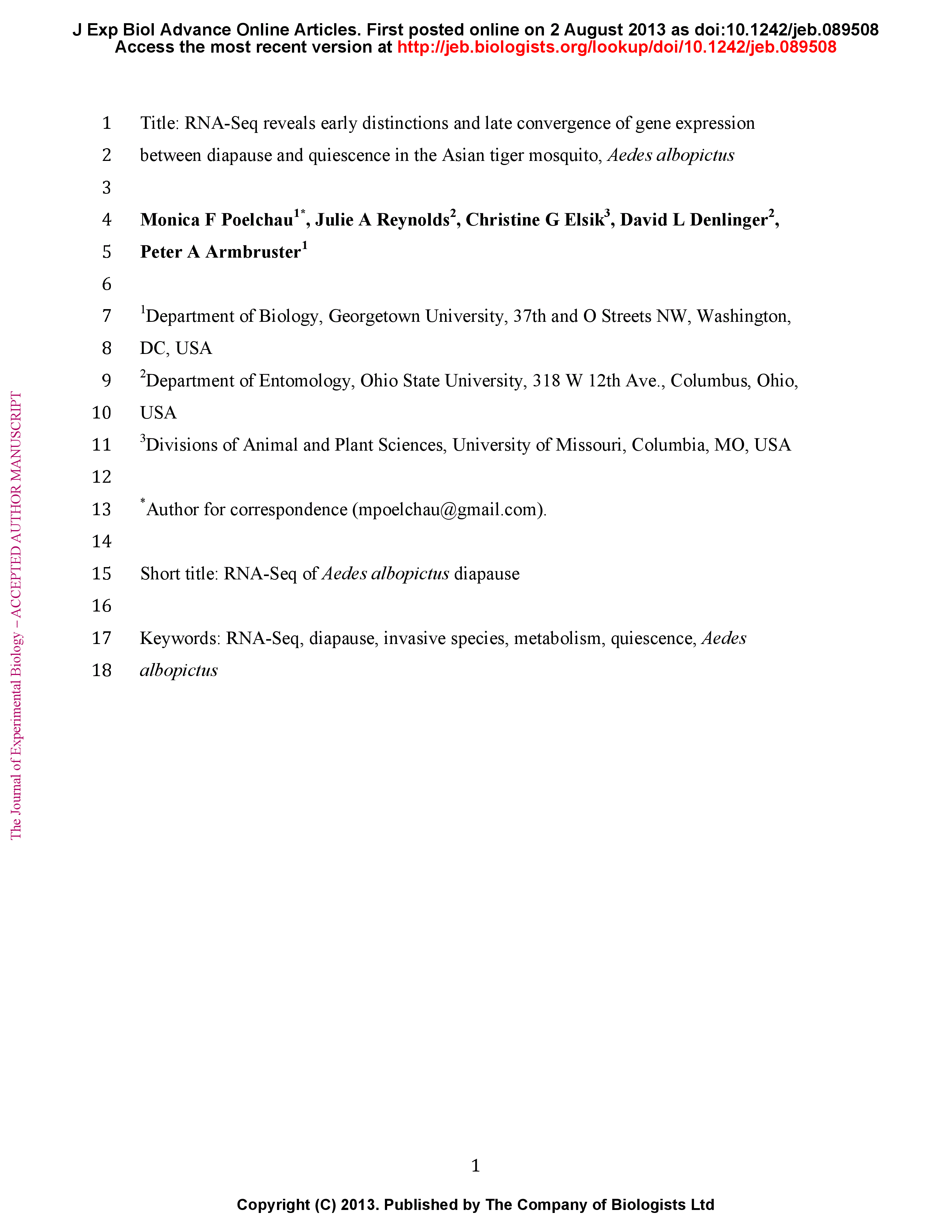Summary
Dormancy is a critical adaptation allowing insects to withstand harsh environmental conditions. The pre-programmed developmental arrest of diapause is a form of dormancy that is distinct from quiescence, in which development arrests in immediate response to hardship. Much progress has been made in understanding the environmental and hormonal controls of diapause. However, studies identifying transcriptional changes unique to diapause, rather than quiescence, are lacking, making it difficult to disentangle the transcriptional profiles of diapause from dormancy in general. The Asian tiger mosquito, Aedes albopictus, presents an ideal model for such a study, as diapausing and quiescent eggs can be staged and collected for global gene expression profiling using a newly developed transcriptome. Here, we use RNA-Seq to contrast gene expression during diapause with quiescence to identify transcriptional changes specific to the diapause response. We identify global trends in gene expression that show gradual convergence of diapause gene expression upon gene expression during quiescence. Functionally, early diapause Ae. albopictus show strong expression differences of genes involved in metabolism, which diminish over time. Of these, only expression of lipid metabolism genes remained distinct in late diapause. We identify several genes putatively related to hormonal control of development that are persistently differentially expressed throughout diapause, suggesting these might be involved in the maintenance of diapause. Our results identify key biological differences between diapausing and quiescent pharate larvae, and suggest candidate pathways for studying metabolism and the hormonal control of development during diapause in other species.








